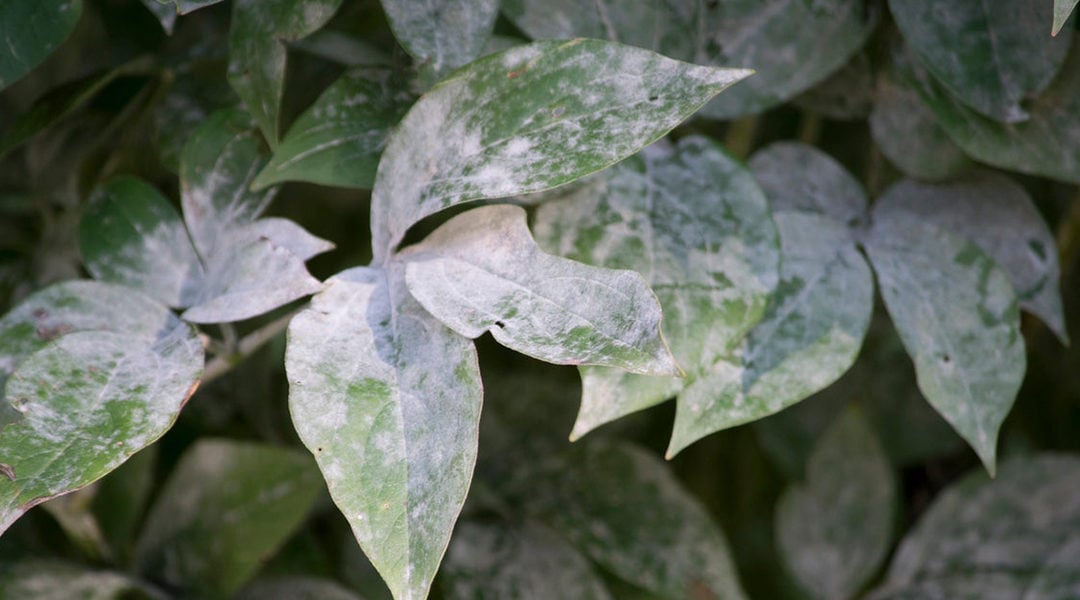Trees are a gorgeous part of our lives, and it’s essential we keep them healthy and happy. One of the most common issues you’ll run into is powdery mildew.
If you spot a white powdery coating on the surface of leaves, you likely have powdery mildew. There are more than 11,000 versions of this plant disease across the world, with each primarily affecting only a specific variety of plants.
If you’ve got dogwoods, magnolias, oaks, crabapples, lilacs, basswoods, or maples in your yard, watch out! These are the most susceptible tree species to this pesky disease.
Don’t worry, your trees won’t die, but powdery mildew can stop them from growing properly and cut down on fruit production.
Let’s dive in for further information regarding powdery mildew on trees and how tree service experts in Louisville, KY suggest you tackle it.
Got Powdery Mildew on Your Trees? Here’s How You Can Spot It
This infection comes from various species of fungi, but its leading cause is Erysiphe cichoacearum.
According to scientists at the University of Minnesota, the infection shows up as a little bump on the leaves. Look for white or grayish spots or fuzzy patches on tree leaves, buds, and stems to spot it.
In some cases, it appears as if the infected plants were dusted with baby powder, while sometimes they look like are sprinkled in spiderwebs. Usually, young leaves, fresh shoots, and water sprouts suffer the biggest blow of powdery mildew.
Withered, infected leaves usually turn yellow and eventually fall off the plant prematurely. If you see the affected area go from purple to red, don’t mistake it for another disease—it’s the same fungal infection.
Powdery mildew on trees thrives in cool and moist environmental conditions. However, hot and dry climates may not prevent it. This fungal infection is mostly brutal on trees in shaded locations with poor airflow.
Seven Steps to Combat Powdery Mildew
Fed up with powdery mildew troubles? We’ve got a few easy-to-follow solutions to get rid of it:
- Cut off the diseased parts, but avoid over-pruning, though. Keep it light during the active seasons, and don’t do it in summer.
- Plant trees that won’t get sick easily. Not sure what to choose? Reach out to a certified arborist in your area for help!
- Don’t crowd them; leave a little leeway between trees! Giving them enough room allows air to circulate so your greenery stays healthy.
- Prune away any sickly plants during the colder months. This will also promote good air circulation and stop fungi from creeping in.
- Skip fertilization for trees and shrubs suffering from powdery mildew, as you’ll be breeding more problems and further propagating the infection.
- Going green doesn’t mean taking risks. It’s best to avoid composting fallen foliage that may have become infested with spores; otherwise, you risk transferring infection from one tree to another.
- Spray your plants with a blend of water, baking soda, and dish soap. Spray the infected areas or wipe them off with a cloth or paper towels.
You can use commercial fungicides to kill the disease, but why use toxic chemicals on a disease that will rarely completely kill your plants? It makes more sense to fight the disease with natural remedies.
Contact Your Local Tree Experts for Assistance
Have you noticed powdery mildew on your trees? New Leaf Tree Service is your go-to source in Louisville, boasting various tree care solutions. Get the help you need today!
Need more information regarding a tree losing leaves? Call our team at (502) 419-9899, and we will answer all your questions.

